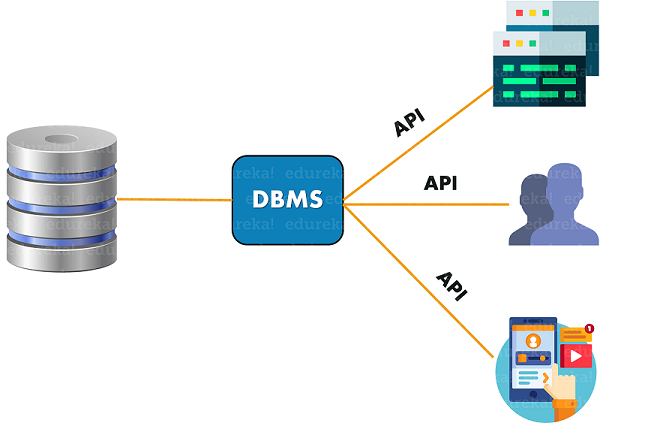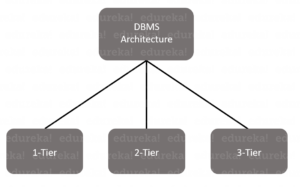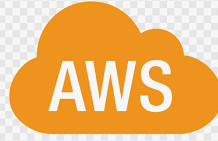Define Database
The Database is an organized collection of structured data to make it easily accessible, manageable and update.
Most databases use structured query language (SQL) for writing and querying data. Users can construct their own databases using a DBMS to satisfy their business requirements.
Base was one of the first DBMS for micro-computers.

- Define Data – Allows users to create, modify and delete the definitions which define the organization of the database.
- Update Data – Provides access to the users to insert, modify and delete data from the database.
- Retrieve Data – Allows users to retrieve data from a database based on the requirement.
- Administration of users – Registers users and monitors their action, enforces data security, maintains data integrity, monitors performance and deals with concurrency control.
Characteristics of Database
Now, the major characteristics of a Database include:
- It uses a digital repository established on a server to store and manage the information.
- The database should be able to store all kinds of data that exist in this real world.
- It can provide a clear and logical view of the process that manipulates data.
- DBMS contains all automatic backup and recovery procedures.
- Database can reduce the complex relationship between data.
- You can view database from different viewpoints according to the requirements specified by the user.
Advantages
- Reduced data redundancy.
- Easier data integrity from application programs.
- Improved data access to users through the use of host and query language.
- Reduced data entry, storage, and retrieval costs.
Disadvantages
- Complexity: Databases are complex hardware and software systems.
- Cost: It requires significant upfront and ongoing financial resources.
- Security: Most leading companies need to know that their Database systems can securely store data, including sensitive employee and customer information.
- Compatibility: There is a risk that a DBMS might not be compatible with a company’s operational requirements.
Architecture
A Database Architecture is a representation of DBMS design. It helps to design, develop, implement, and maintain the database management system.
You can have:

Single-tier
1 Tier Architecture in DBMS is the simplest architecture of Database in which the client, server, and Database all reside on the same machine. A simple one tier architecture example would be anytime you install a Database in your system and access it to practice SQL queries.

2-Tier
The two-tier architecture is the same as the basic client-server. In this architecture, applications on the client end can directly communicate with the database at the server-side. The server performs the request on the database and returns the result back to the client.

Three-Tier
The 3-Tier architecture contains a layer between the client and the server. Here, the client can’t directly communicate with the server. The end-user has no idea about the application server.
The application present on the client-end interacts with an application server which in turn communicates with the database system.
It has three layers or tiers namely, Presentation layer, Application layer, and Database layer.
- Database Tier: In this tier, a database is present along with its processing languages (Query).
- Application Tier: This tier consists of application server and the programs that access the Database. For a user, this application tier showcases an abstract view of the Database. At the other end, the Database tier is not aware of other users beyond the application tier. the application layer sits in the middle and acts as a mediator between the end-user and the Database.
- User Tier: The end-users operate in this tier and know nothing about the existence of the Database beyond this layer. In this layer, multiple Views of the Database can be provided by the application.






